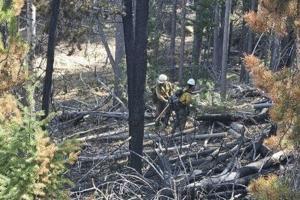Listen to Story As global temperatures and carbon dioxide levels rise, arsenic in rice could increase, becoming a major public health threat, especially in Asia. A new study published in The Lancet Planetary Health has warned that climate change is making rice, a staple food for half the world’s population, increasingly toxic by boosting its arsenic content. The findings have major implications for billions of people who depend on rice as a dietary mainstay, particularly in Asia.
Conducted by scientists from Columbia University in collaboration with researchers from China and the US, the study is the first to investigate how rising carbon dioxide (CO 2 ) levels and temperatures, both of which are projected to rise sharply due to climate change, can affect arsenic accumulation in rice. The results are troubling: when both factors increase, so does the level of inorganic arsenic in the grain, posing long-term health risks, including cancer, heart disease, and neurological damage. According to the study, rising levels of carbon dioxide in the air and increasing global temperatures could harm both the quantity and nutritional quality of rice.

The study found that when both carbon dioxide and temperature increased, arsenic levels in rice also rose, more than when either one increased alone. This rise in arsenic seems to be caused by changes in the soil due to climate conditions, which make it easier for more harmful forms of arsenic to move into the rice. The study found that when both carbon dioxide and temperature increased, arsenic levels in rice also rose, more than when either one increased alone.
(Photo: Getty Images) Based on current rice consumption in several Asian countries, the researchers predicted that by 2050, people in these countries could face higher risks of cancer and other health problems due to more arsenic in rice. This suggests that if rice continues to be grown in flooded fields, especially under future climate conditions , we may see a rise in arsenic-related health risks. WHY RICE IS VULNERABLE Rice is typically grown in water-submerged fields, or paddies, which allows the plant to absorb not only water but also any contaminants present in the soil, including arsenic - a heavy metal.
The element exists both naturally, like in fish and shellfish, and as a result of industrial pollution, but it's the inorganic form (industrial waste) that is especially harmful to humans. "Rice has always been a food where arsenic is an issue, and climate change is making it worse. This is one more reason to intervene, to control people’s exposure," Professor Keeve Nachman, co-author of the study and a public health expert at Johns Hopkins University told Inside Climate News.
Rice is typically grown in water-submerged fields, or paddies, which allows the plant to absorb not only water but also any contaminants present in the soil, including arsenic. (Photo: Getty Images) The porous nature of rice and its submerged growing conditions make it particularly prone to soaking up arsenic from the soil and water. RISING TOXICITY AND HEALTH EFFECTS The six-year-long field study involved growing multiple varieties of rice under controlled levels of temperature and carbon dioxide that simulate future climate scenarios.
Lead researcher Dr. Lewis Ziska, a plant physiologist at Columbia University, said the results were alarming as previous studies looked at temperature and carbon dioxide in isolation but not together. The researchers found that the combination of elevated temperatures and CO 2 significantly raised the amount of both total and inorganic arsenic in rice grains.
They then used per capita rice consumption data to estimate future disease risks in seven of the highest rice-consuming countries in Asia: India, Bangladesh, China, Vietnam, Indonesia, Myanmar, and the Philippines. The researchers used per capita rice consumption data to estimate future disease risks in seven of the highest rice-consuming countries in Asia: India, Bangladesh, China, Vietnam, Indonesia, Myanmar, and the Philippines. (Photo: Getty Images) Across all seven nations, the projected health risks, including increased rates of bladder, lung, and skin cancers, rose in correlation with rising arsenic exposure from rice.
The Lancet study also suggested arsenic may be linked to diabetes, pregnancy complications, problems in brain development, weaker immunity, and other illnesses. In southern China and across southeast and south Asia, eating rice is already known to be a major source of arsenic in the diet and can increase the risk of cancer. While the link between arsenic and rice is not new, the study is a stark reminder that climate change has complex and often hidden health consequences, the researchers noted.
Despite earlier research, international food safety regulators have yet to impose stringent arsenic limits on rice. The US Food and Drug Administration, for instance, has not set binding standards for arsenic levels in rice-based foods. Researchers recommend a multi-pronged approach: breeding rice varieties that are less prone to arsenic uptake, altering farming practices to reduce arsenic exposure, and increasing public awareness about safe cooking techniques or diversifying diets with alternative grains.
.
Health

Half the world relies on rice but climate change is making it more toxic

Half the world relies on rice but climate change is making it more toxic















